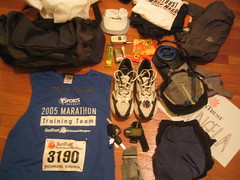The results are largely unexpected: the best male marathon runners over 65 and the best female marathon runners over 45 have consistently improved their performance over the last 30 years. At the same time, the researchers also observed a strong increase in athletes over 40 participating in the New York marathon: from 36% of the total masculine runners between 1980-1989, to 53% between 2000 and from 24 to 40% during the same periods for female runners. Details of these descriptive analyses were published in the AGE review, The Official Journal of the American Aging Association.

Inserm researchers analysed the chronometric performances of competitors in the New York marathon in accordance with age and sex over the 1980-2009 period. They classified runners who successfully completed he race into 10 separate age categories (20-29; 30-39; then every 5 years from between 40 and 79).
Although the average times achieved by the 10 best male and female athletes in age categories below 60-64 have not changed over the last 30 years, there was a sharp decrease in times for the senior age categories: for an average marathon time achieved of 3 hours and 50 minutes, men in the 65-69 age category improved by 8 minutes between 1980-1989 and 1990-1999, and 7 minutes between 1990-1999 and 2000-2009. Similarly, the average time achieved by women in age categories above 45-49 fell significantly. For example, the average performance for the 55 age category improved by 33 minutes between 1980 and 1990 (for an average race time of 4 hours and 20 minutes), and by 8 minutes between 1990 and 2000.
The researchers have thus concluded that, over the last two decades, the performances of the best male marathon runners over 65 and the best female marathon runners over 45 have particularly improved, whereas their younger counterparts have remained stable.
“The improved performances can be explained by the increased number of participants in these age categories, as well as the increased interest this age population has in terms of the benefits of physical activity on health and well being” says Romuald Lepers, whose research into motor function plasticity during aging is part of the overall research of Inserm Unit 1093 “Cognition, Action and Sensorimotor Plasticity”, directed by Thierry Pozzo.
In recent years, the gap in performance between men and women has stabilized, in all age categories, suggesting that the decline in physiological functions with age is similar for both sexes. The mechanisms via which physical activity acts advantageously in terms of slowing down aging-related processes remain to be explored. For the researchers, this initial data on athletes over 40, combined with new physiology and sociology data, will lead to improved understanding of the role physical exercise has in “aging well.”

